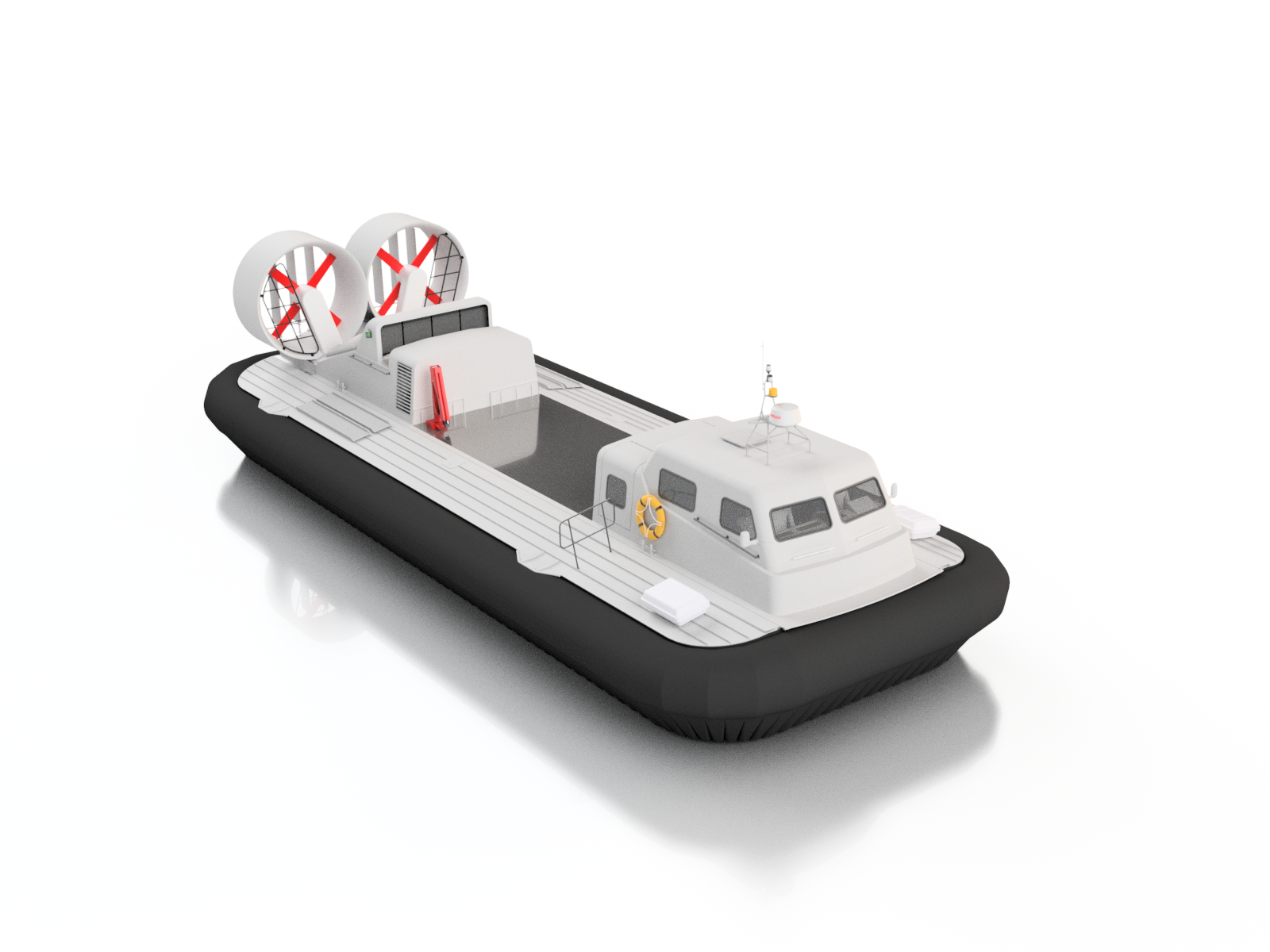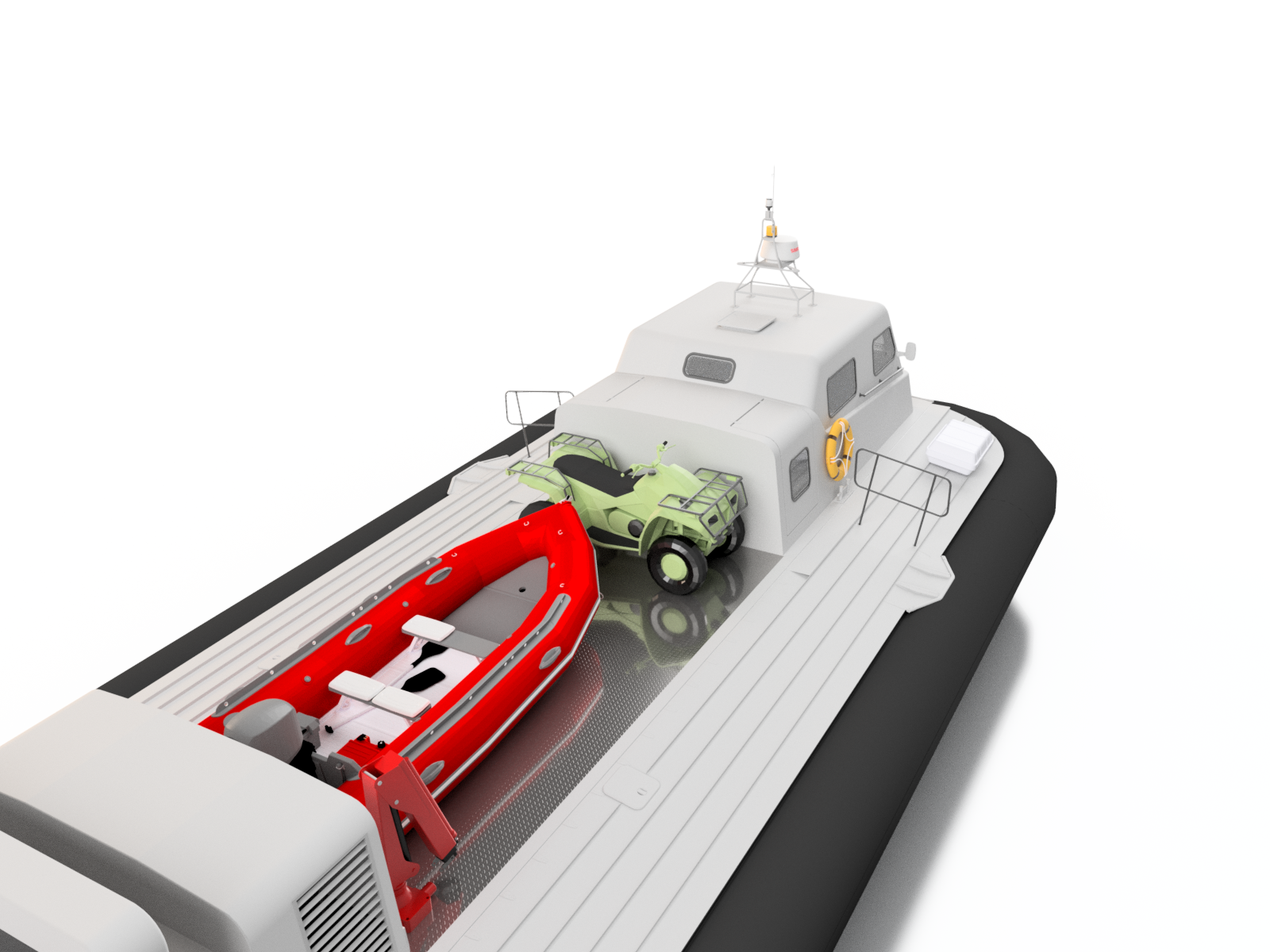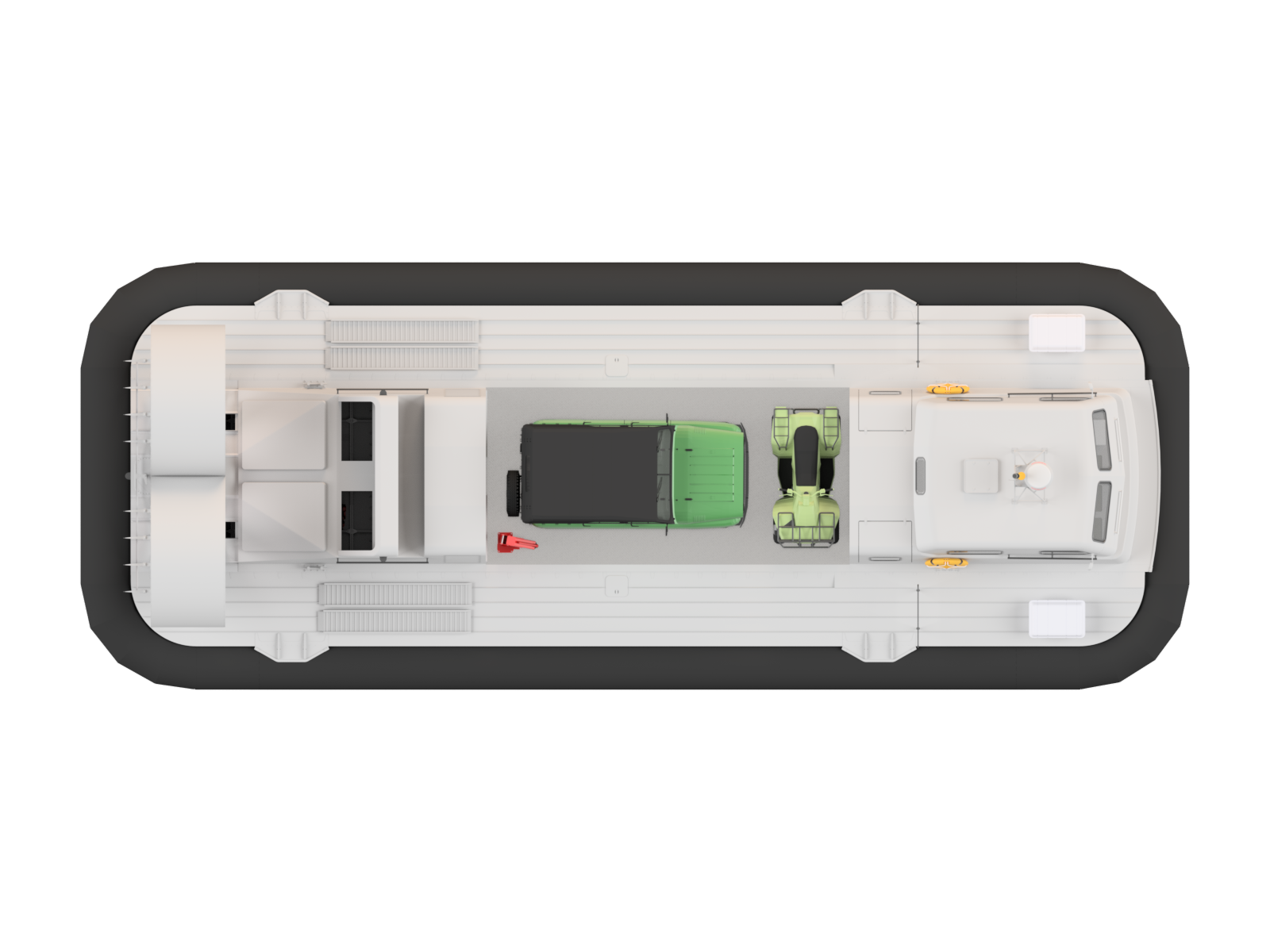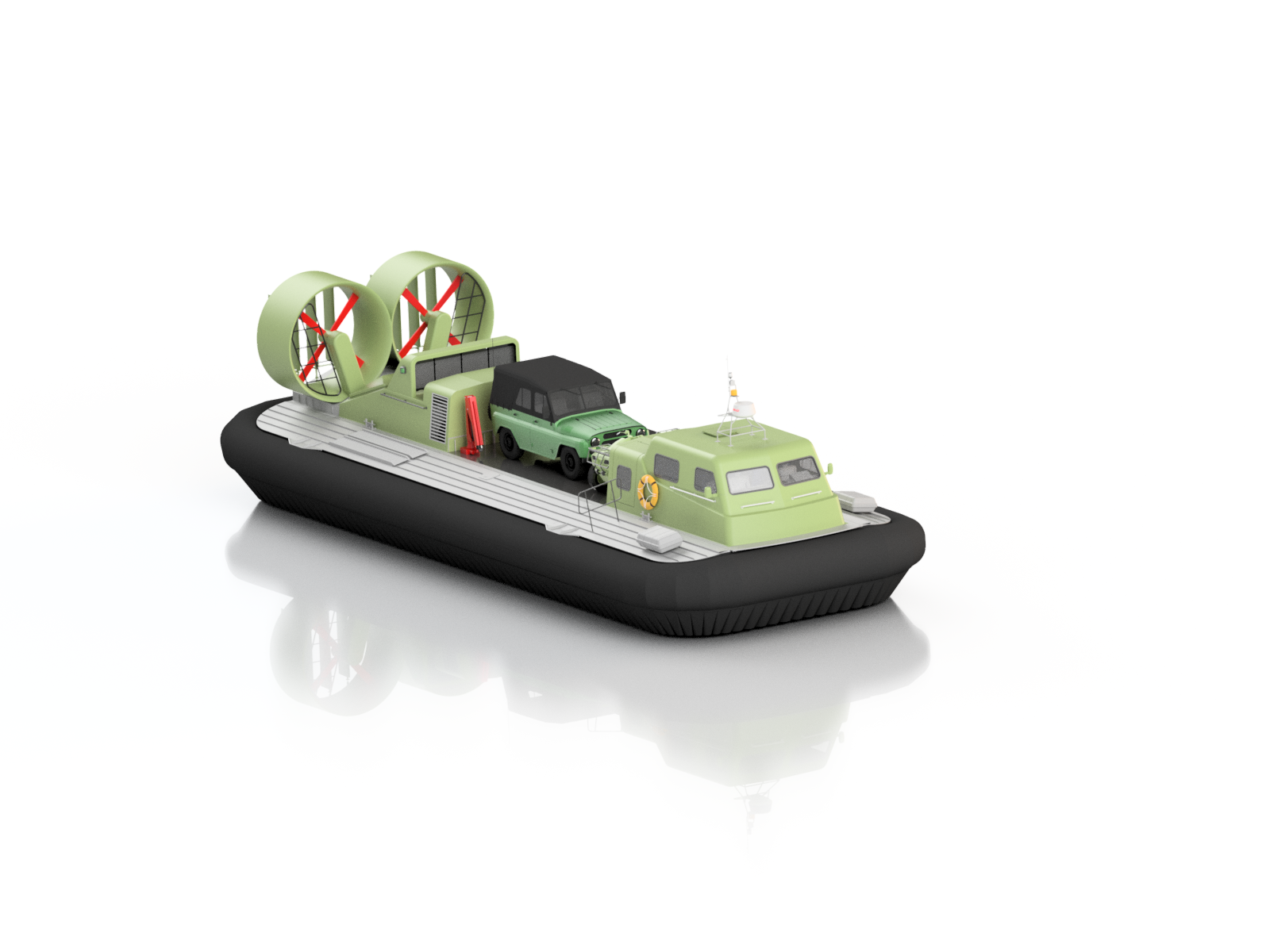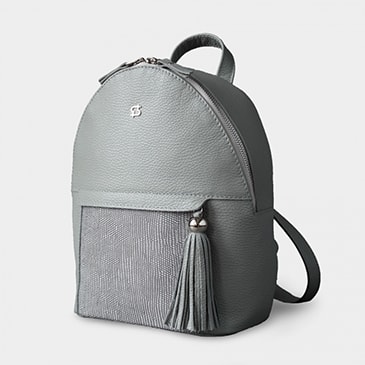12 persons + 3000 kg

Description (download PDF presentation)

The high-speed amphibious hovercraft PARMA 44 is designed to carry up to 4000 kg of cargo or up to 12 people + 3 tons of cargo. Hovercraft belongs to the class of “cargo and passenger” hovercraft and is designed to transport passengers across water bodies in summer or winter, including those with short-term access to the shore. The boat is able to overcome smoothed ledges up to 90 cm high and not smoothed – up to 65 cm. The boat is capable of speeds up to 75 km / h on water. Operation is permitted at an outdoor temperature from -40 ° C to + 35 ° C and a maximum wind speed of up to 12 m / s at any time of the year. The vessel can be operated in the coastal sea areas A1. Limitations during operation – wave height of 3% security up to 3 points (up to 1.25 m), distance from the shelter no more than 4 hours at an operating speed. When driving on ice or snow-covered surfaces, operation is permitted on reservoirs of all categories. Operation is permitted on any other flat solid surface, in extreme shallow water and swampy surfaces.
Main dimensions and characteristics
| Overall length of the hull, m | 17.0 |
| Extreme breadth of the hull (with hinged sections), m | 6.0 |
| Cushion height (clearance), m | 0.9 |
| Passenger-carrying capacity, people | 12 |
| Minimum crew, people | 2 |
| Payload, t | 4.0 |
| Service speed (on water), km / h | 45 |
| Maximum speed (on water), km / h | 75 |
| Service speed (on ice), km / h | 50 |
| Fuel reserve, l | 700 |
| Service fuel consumption on water, l / h | 50 |
| Endurance of fuel reserve, h | 12 |
| Safe wave height, m | 1.25 |
| Supervision (Option 1) | Small vessel RRR or RMRS, Category “3”, 12 people |
The hull
The hull of the vessel is made waterproof. As the material of the main hull, set, foundations, sheet and profile rolled products from aluminum alloys are accepted. Flat products are used of the Amg5M brand, ALL-UNION STATE STANDARD 21631-76. Profile rolled products of the Amg6M or D16T grade in accordance with ALL-UNION STATE STANDARD 8617-75. The hull of the hovercraft is riveted (with the exception of small parts made by welding). The impermeability of the outer contour of the boat and the corresponding transverse bulkheads is ensured. The tightness test is carried out in accordance with the test scheme and table. Corrosion protection of the housing is provided by the use of aluminum-magnesium alloys, which are resistant to corrosion in river and sea water. In marine hulls, the D16 alloy is replaced by AMg. Additionally, it is envisaged to paint the outer and inner surfaces of the case with paints and varnishes.
Salon
As standard, the passenger compartment is equipped in the front with two soft passenger seats, including one for the captain. The cabin provides for the installation of 10 passenger seats. The deckhouse is made of a three-layer structure, the middle layer of which is insulation. The outer layer is made of fiberglass based on polyester resin with a reinforcing material made of fiberglass, coated with a colored resin (gelcoat). The middle layer is made of tiled foam. The inner layer is made of fiberglass, pasted over with a lining – pile fabric. Behind the saloon there is an open cargo deck measuring 6×3 m. The superstructure is not provided. A removable awning is provided to cover the cargo located on the cargo deck from atmospheric precipitation. The crane can be mounted on the cargo deck or above the air bag blower compartment. For transportation of wheeled vehicles, it is provided for its loading on removable ramps. Placement of cargo on hinged sections is allowed.
Engine
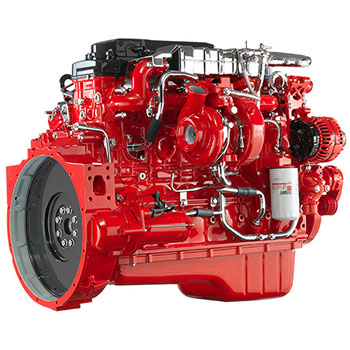
Two engines of the American brand Cummins 6ISB 300, 300 hp each, are installed on the hovercraft. Four-stroke, six-cylinder diesel engine with electronic common rail fuel supply, in-line with pistons rotating one common crankshaft, with a lower camshaft. The Cummins 6isb 300 engine is designed for installation on medium to heavy duty trucks. In the domestic industry, it is used as a power unit for such vehicles as KAMAZ 6460 and 6520. The engine has a closed-type liquid cooling system with forced circulation. Combined lubrication system: under pressure and spray. The rated power of the Kamens 6isb 300 engine is 224 kW, which translates into horsepower equals 300 units. This figure, for clarity, is included in the marking of the motor. The specific power of the 6isb 300 is 0.36 kW per 1 kg of engine weight, and the specific torque is 1.45 Nm / kg. To increase the power parameters, the VGT turbocharger is installed on the Cummins power unit, which, in addition to the main function, contributes to fuel economy when operating at full power. For the Cummins 6isb 300, the length / width / height are within 1260mm, 930mm and 1045mm respectively. Fueled weight is 616 kg, while the dry weight of the motor is only 522 kg. The relatively low weight of the engine allows for a more rational use of the lifting capacity of the hovercraft. Engine oil consumption when operating at rated power (300 hp) is 0.1% of fuel consumption. The engine is currently being manufactured at the Cummins KAMAZ joint venture in Russia.
| Type of engine | 4-х тактный 6-и цилиндровый Cummins 6ISB 300 |
| Number of engines, pcs. | 2 |
| Power, h.p. (kw) | 300(220) х2 |
| Maximum speed, rpm | 2600 |
| Working capacity, cubic cm | 6700 |
| Fuel-oil system | Common Rail от Bosch |
| The specific fuel consumption of one engine, (g/kWh * h) | 200 |
| Cooling system | Жидкостная |
| Motor maintenance weight, kg | 522 |
An option is allowed with the replacement of KAMAZ-Cummins engines with YaMZ-536 engines with similar characteristics.
Flexible fencing
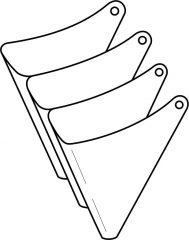
The amphibious qualities of the hovercraft are provided by the separation of the body from the screen due to the holding of an air cushion under the body by a flexible fence. The lift height depends on the speed of the blowers (engines) and the trim angle. The hovercraft adopted a two-tier flexible fencing scheme with removable elements along the entire perimeter of the lower tier and with a flexible receiver in the upper tier. This scheme allows removable elements to remain elastic. Those. when passing through obstacles, the flexible elements deflect and pass the object under them without resisting its impact. Only the lower segment tier, which consists of many independent elements, participates in contact with the surface. Each element is attached to the receiver with four clamps. Replacement is simple and requires no special tools or skills. Due to the constant air flow in the airspace in dash air bubble, the flexible fencing retain the ability to move the hovercraft even if all removable elements are lost. The flexible fencing material – rubberized fabric based on rubber nylon. This fabric allows you to expand and take a given shape in low temperatures. The maximum achievable height of the air cushion is about 0.9 m. The height of the air cushion is measured from the supporting solid surface to the bottom of the hull.
Air bubble propellers and blowers
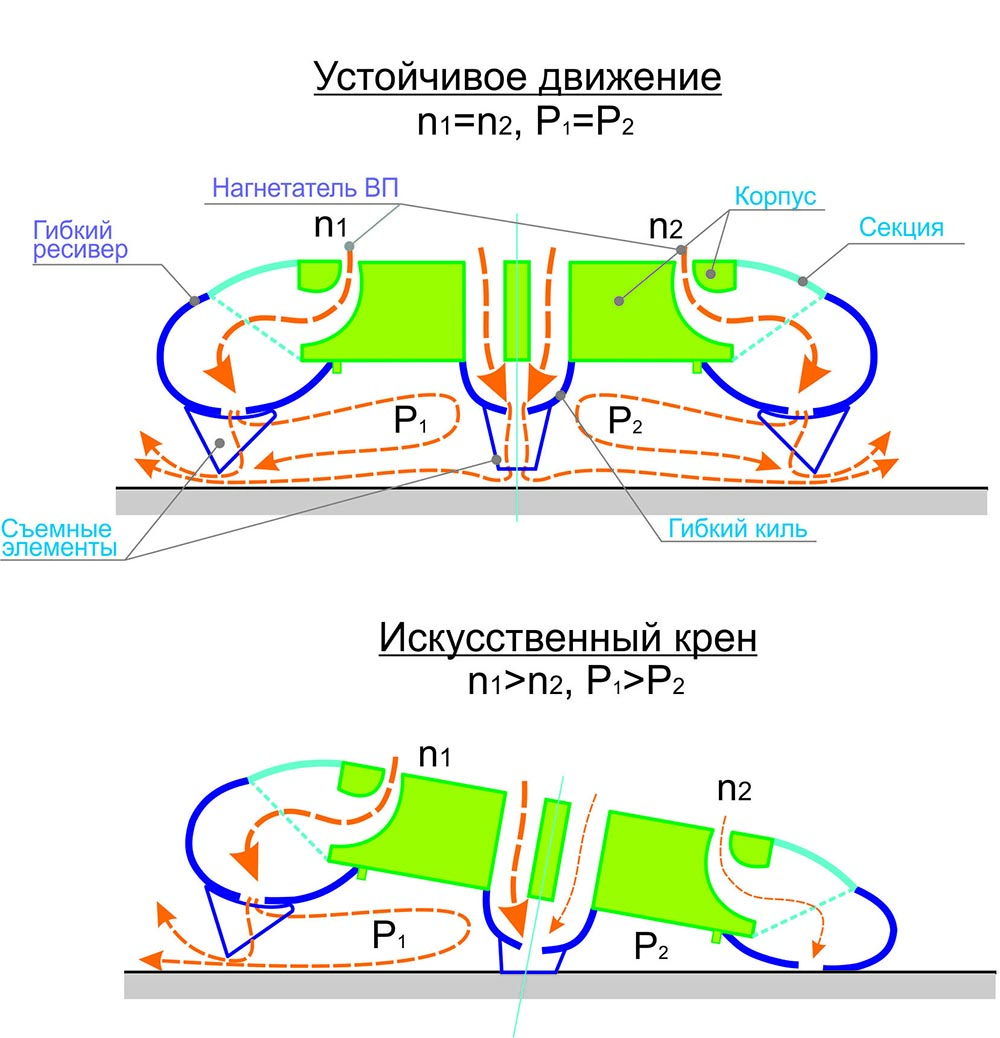
As propellers on the hovercraft, there are two four-blade propellers of variable pitch in aerodynamic fixed nozzles. The support unit of the variable pitch propeller and the reverse mechanism are located in the pylons of each nozzle. The propeller blades are made of fiberglass composite coated with aramid. The angle of rotation of the propeller blades is controlled by direction indicators installed in the control panel. Two twin centrifugal blowers are provided as air cushion blowers. The air cushion blowers operate separately, each on its own side. The blowers are mounted on shafts supported on both sides by self-aligning bearings. The blowers are made of fiberglass, carbon fiber and aramid. Separate control of the speed of the blowers (n1 and n2) and the sectioning of the air cushion zones allow creating different pressures in the left P1 and right P2 halves. This property makes it possible to create an artificial bank, which greatly helps with maneuvers and helps to neutralize the effect of side wind gusts. In the event of a failure of the engine or the supercharger of one of the sides, the jumper between the zones is removed and the flexible fence is filled with air from the working supercharger. The hovercraft can continue to move on one supercharger.
Control
Directional control is provided by turning the steering wheel in the helm station and rudders installed in the stream behind the propellers. Rotation of the rudders provides control torque with the center of rotation in the nose area. Provision is made for shifting propellers of variable pitch from FORWARD to REVERSE. Shifting is done both jointly and separately by pedals located at the driver’s feet. The split shift provides a control torque with the center of rotation in the stern area. The propeller speed control is provided, which provides different thrust and creates a control torque with the center of rotation in the stern area. The possibility of hovering on an air cushion at low speeds is provided by installing the propeller blades in several intermediate positions in the range of angles from full forward to full rear. Shifting the blade of one propeller backward is provided, corresponding to the shifting of the blade of the other propeller forward (work in disarray) Remote control of the power plant is performed by levers located on the control panel.
Registration
Hovercraft is designed according to the rules of the Russian River Register class “small size category * 3”. This allows you to use it in the following options: For personal and business needs without the right to commercial exploitation. Number of seats up to 12 people + cargo. Swimming is permitted – INLAND WATER-WAYS not higher than “P”. In winter, on ice without limits. STATE INSPECTION OF SMALL VESSELS (SISV) registration. Amateur rights. For passenger and freight traffic MP (coastal navigation), INLAND WATER-WAYS with the right of commercial operation. Number of seats up to 12 people + cargo. Sailing permitted – INLAND WATER-WAYS not higher than “P” or MP 6 miles (11 km) from the place of refuge. In winter, on ice without limits. Registration at the basin inspection or seaport. Amateur rights. * Place of refuge – any naturally or artificially protected water area that can be used to shelter a vessel in the event of circumstances that threaten its safety. For a hovercraft, this is any land area where a vessel can go, i.e. actually coastal sailing. * Passenger – any person on board a ship, except for the captain and crew members or other persons working or having any occupation related to the activities of this ship (special personnel), as well as a child under one year old
Transportation
Hovercraft can be transported on a special auto trailer 18 meters with escort, railway platform, on deck or inside the vessel.
Systems
Hovercraft is equipped with the following systems:
electric (24V, 2 batteries)
fuel (700 liters)
engine cooling
charge air cooling (turbocharging, intercooler)
gas exhaust (stainless)
ventilation of the passenger compartment and engine compartment
trimming (tanks of 400 liters in the bow and stern)
steering (two groups behind nozzles, 4 rudders each)
fire fighting
Other
Hovercraft is standard equipped with:
life jackets by the number of passengers
two xenon headlights on the handle
two water-air heaters from different engines
the variable-pitch propeller
windscreen washer and wipers
trim indicator
two on-board diagnostic computers Multitronics (engine speed, voltage, remaining fuel in tanks, coolant temperature, errors)
indicator of the angle of attack of the propeller blades
indicator “Fire” in the engine compartment
the variable-pitch propeller electric amplifiers
dehumidification pumps
roof cargo hatch
gullwing doors with a width of at least 850 mm
radio tape recorder, cup holders, glove boxes, cigarette lighter, ashtray, etc.
 Youtube
Youtube